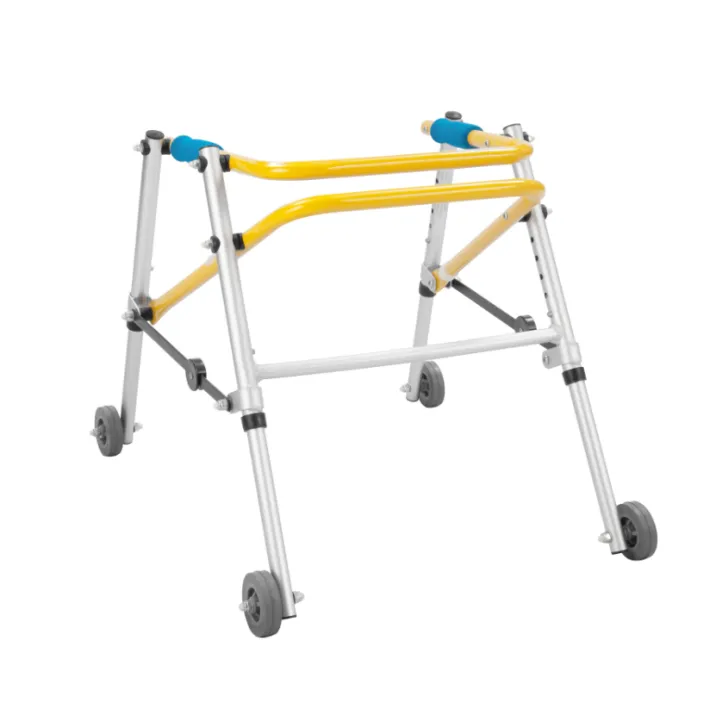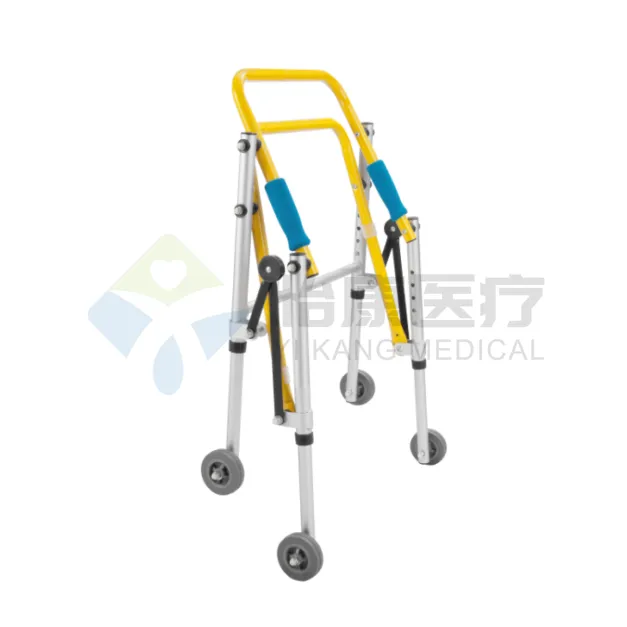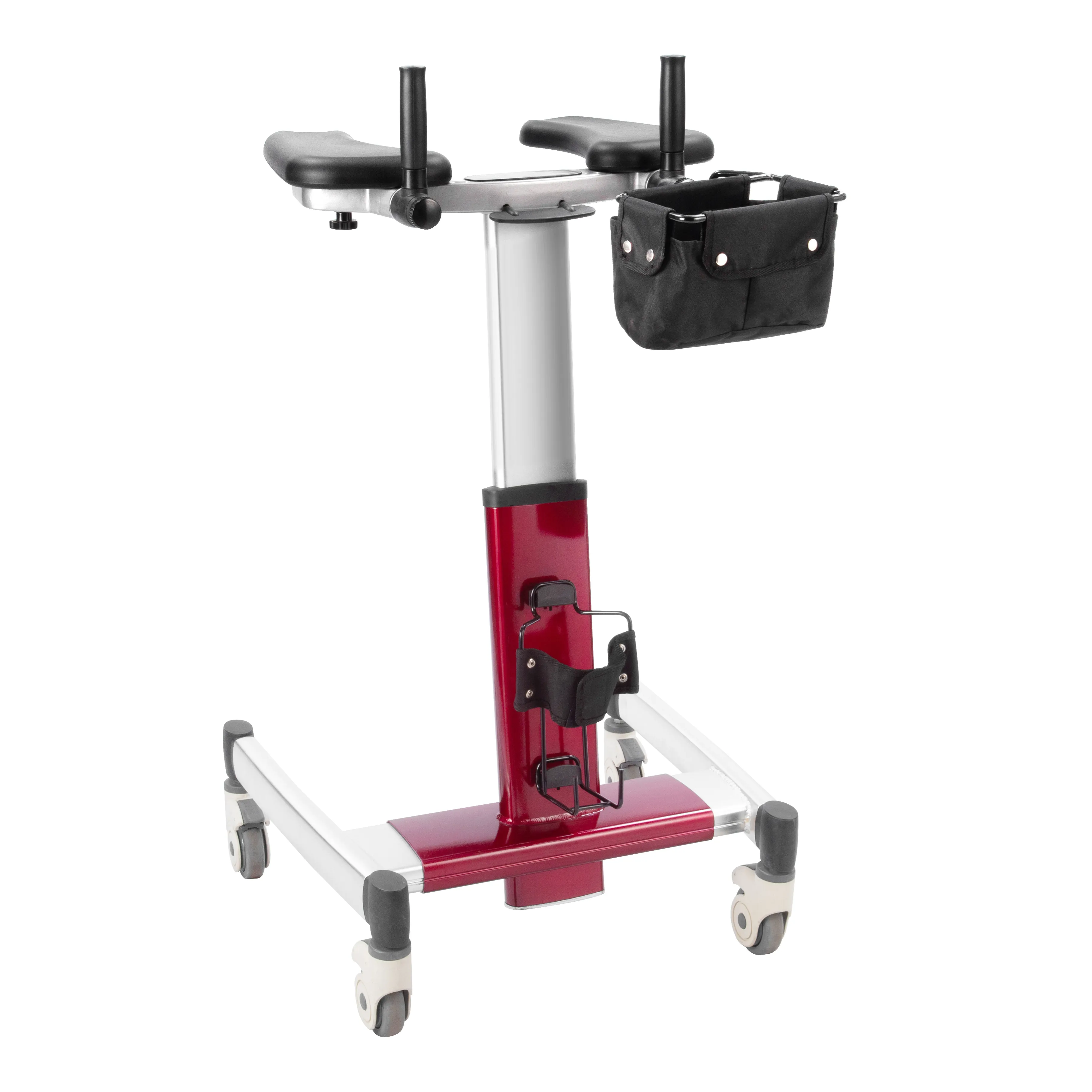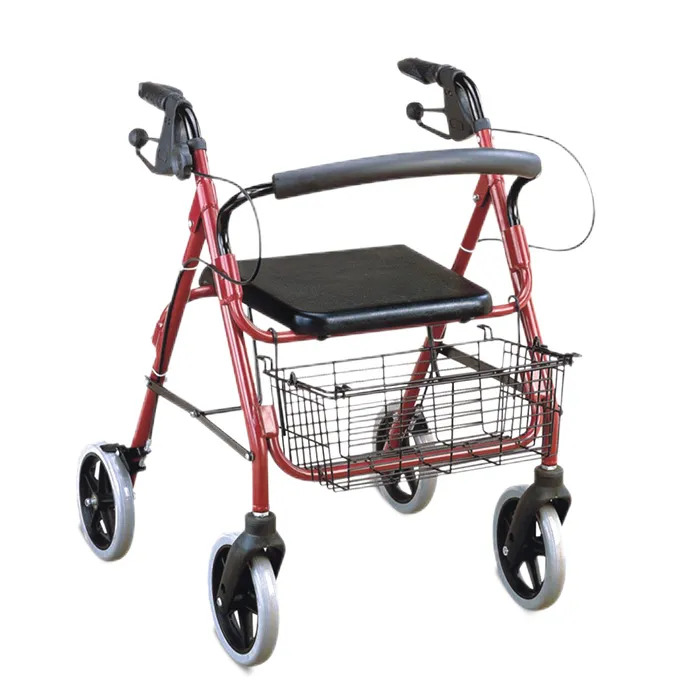In the field of modern rehabilitation assistive devices, 4 wheel walking frame has gradually become a common daily walking assistive device for the elderly and people with limited mobility due to its stable structure, convenient use and good flexibility. However, despite the wide application of 4 wheel walking frame, not everyone is suitable for using this device.
According to the analysis of medical rehabilitation experts, 4 wheel walking frame is designed as an assistive tool tailored for specific groups of people. It has powerful functions but also has clear applicable boundaries. If the user does not meet its functional positioning, it may bring safety risks and even have a negative impact on the rehabilitation process.
This report will systematically analyze who is not suitable for using 4 wheel walking frame from multiple dimensions such as physical condition, cognitive ability, use needs, and environmental adaptability, and provide clear and professional reference for patients, caregivers and rehabilitation institutions.

What is 4 wheel walking frame?
4 wheel walking frame, also known as "four-wheel walker" or "four-wheel roller", is a walking aid with four wheels, usually with the following basic features:
● Equipped with handrails and brake system;
● There is a foldable seat in the center for rest;
● Equipped with a storage basket or storage bag for carrying items;
● The user holds the handlebars with both hands and pushes the walker forward independently.
The target users of 4 wheel walking frame are middle-aged and elderly people or rehabilitation people who have a certain ability to walk independently but have problems with balance or endurance.
Working mechanism of 4 wheel walking frame
Compared with traditional walking frames, 4 wheel walking frames rely on wheels to roll forward on the ground. Users do not need to lift the entire device, but can get forward momentum by pushing forward. This design greatly reduces the user's physical exertion while providing better walking rhythm control. But the premise is that the user has good cognitive, coordination and balance abilities.
Patients with cognitive impairment: the biggest forbidden group of people for 4 wheel walking frame
1. Risks of use for patients with moderate to severe cognitive impairment
People with cognitive impairment, especially those with moderate to severe Alzheimer's disease, vascular dementia or other neurodegenerative diseases, are the least suitable group to use 4 wheel walking frame.
Although the structure of 4 wheel walking frame is stable, its safe use is highly dependent on the user's operational judgment ability. Patients with moderate to severe cognitive impairment often have the following problems:
● Unable to accurately judge the timing of using the brake system;
● Easily use the walker as a chair and sit casually on uneven roads;
● Forget how to hold the handrails or apply force correctly;
● Unable to judge the spatial distance when turning or reversing.
These factors may cause accidents such as falls, collisions or seat overturning.
2. Cognitive impairment affects the operation sequence and risk prediction
Using 4 wheel walking frame requires users to pay continuous attention to the walking environment and adjust the speed and direction in time. People with cognitive impairment usually cannot correctly identify complex road conditions, such as crowded areas, ramps, narrow walkways, etc., so the operation sequence is chaotic and lacks the ability to predict potential dangers.
● The result is: even if they have basic walking ability, people with limited cognitive function are very likely to encounter serious accidents when operating a 4 wheel walking frame.

People with severe lower limb weakness or paralysis: The structural design does not support weight bearing
1. The 4 wheel walking frame is not a load-bearing tool
The core purpose of the 4 wheel walking frame is to assist walking and provide balance, rather than to bear the entire weight of the user. For users with almost complete leg weakness or complete paralysis, the 4 wheel walking frame lacks the necessary structural support:
● Unable to get up safely by hand;
● Users cannot provide minimal walking cooperation;
● Forced use may damage the wheel axle or brake system.
2. People who need to rely entirely on others to move should use a wheelchair or shifter
For individuals who are completely unable to take care of themselves, they should turn to transport wheelchairs, standard manual wheelchairs or electric wheelchairs, which have complete support structures and safe sitting posture guarantees. The 4 wheel walking frame does not have such functions. Once used for people with severe mobility impairments, it not only does not help with movement, but also increases the probability of falls and equipment failures.
Severe posture balance disorder: insufficient center of gravity control ability
1. Good trunk control ability is required
The effectiveness of the 4 wheel walking frame depends on the user's trunk stability and balance control ability. Patients with severe balance disorders, including those with advanced Parkinson's disease, cerebellar ataxia or severe vestibular system dysfunction, cannot maintain trunk balance in a dynamic environment.
In the process of pushing the 4 wheel walking frame, such patients often face the following risks:
● Unable to quickly adjust when the center of gravity shifts, resulting in rollover;
● Falling forward and getting injured due to lack of effective braking response;
● Relying on the vehicle body for standing support, but the equipment has no stable support function.
2. Risk of sliding in a static state
Even if you are not walking, just resting in place, the pulley structure of the 4 wheel walking frame may cause unexpected sliding on the inclined ground. For those with poor posture control, they may lose balance and fall when sitting or standing up.
Therefore, the 4 wheel walking frame is not suitable for use as a "stabilizer" and can only serve those with basic balance ability.

Those who cannot operate the hand brake: the braking system relies on mismatched abilities
1. Hand strength and fine operation ability are basic conditions
4 wheel walking frame is usually equipped with a wired braking system. Users need to hold the handlebars with both hands and operate the brake lever to control the speed and stop during the journey. This operation process requires a certain amount of hand muscle strength and coordination.
The following people are not suitable for use:
● People with weak fingers due to arthritis or rheumatoid lesions;
● People who have lost fine hand movement control due to neuropathy (such as carpal tunnel syndrome);
● People with unilateral limb weakness in the early stage of stroke rehabilitation;
● People with long-term hemiplegia and complete disability of one hand.
For these users, effective braking operation cannot be achieved. When encountering ramps, crowded areas or scenes where emergency stops are required during travel, collisions, falls and other dangers are very likely to occur.
People with spatial orientation loss: environmental cognitive impairment affects safety of use
1. Poor spatial sense affects route judgment
The operation of the 4 wheel walking frame requires users to have a certain sense of spatial orientation to avoid hitting obstacles or deviating from the route. People with poor spatial sense often have the following problems:
● Going off the route during operation;
● Unable to correctly assess the width of door frames and aisles;
● Misjudging the angle when turning;
● Unable to coordinate avoidance in crowded environments.
2. Visual perception disorders increase risks
Some patients with visual impairments (such as those with reduced visual field and loss of stereoscopic sense) cannot correctly control the forward path of the 4 wheel walking frame even if they have good body coordination, thereby increasing the risk of accidents.

Scientific evaluation is the prerequisite for using 4 wheel walking frame
Through the above analysis, it can be clear that although the 4 wheel walking frame is a convenient and advanced rehabilitation device, its use effect depends on the user meeting a series of functional prerequisites. The following people are clearly considered unsuitable for using the 4 wheel walking frame:
| Not suitable for people | Main reasons |
| People with moderate to severe cognitive impairment | Unable to master the usage method, there is a high safety risk |
| People with severe lower limb paralysis | Lack of walking ability, the equipment structure cannot bear the weight |
| People with postural control impairment | Poor balance ability, prone to rollover and fall during use |
| People with hand dysfunction | Unable to operate the brake system, there is a risk of brake loss of control |
| People with visual spatial sense loss | Easy to misjudge the route, increase the probability of collision and slip accidents |
Although the 4 wheel walking frame is a rehabilitation tool, it is not a general tool. It must be selected after professional evaluation based on physical ability, cognitive status, use environment and other factors. If the wrong choice is made, it will not only fail to improve the quality of life, but also bring greater risk of injury.
Why should I choose Yikang Medical as my supplier?
Foshan Yikang Medical Technology Co., Ltd is a trusted manufacturer and supplier of high-quality hospital furniture and rehabilitation equipment. We offer a wide range of products designed to meet the needs of healthcare providers. With certifications like CE, FDA, ISO13485, and ISO9001, we ensure that our products are safe, reliable, and durable. Whether you're looking to buy hospital beds, wheelchairs, or other medical furniture, we provide excellent customer service and competitive pricing to meet your procurement needs.

